

Display No. 6D
BRISTOW, Leslie
Leslie Bristow joined the Royal Navy as a Stoker 2nd Class in August 1937, training in the shore establishment HMS Victory. At the outbreak of the Second World War, Bristow was serving in the submarine depot ship HMS Medway which was posted to the China Station. He then joined the shore establishment HMS Tamar in Hong Kong working on Motor Torpedo boats and the river gun boat HMS Seamew. In October 1941 he was briefly posted to HMS Sultan before returning to the United Kingdom where he served in the shore establishments HM Ships Pembroke, and Dinosaur. From September 1943 until the end of the war, he was posted to HMS Copra and from here he was involved in the Normandy landings.
After the war Bristow continued to serve with the Royal Navy in the United Kingdom and abroad until transferring to the Royal Fleet Reserve in 1947. He then entered the Royal New Zealand Navy serving at sea in motor launches and in HMNZS Hawea as a Petty Officer Stoker Mechanician. He retired from the Navy in January 1952.
Awarded medal(s)
Medal Description [Left to Right]:
The 1939-1945 Star
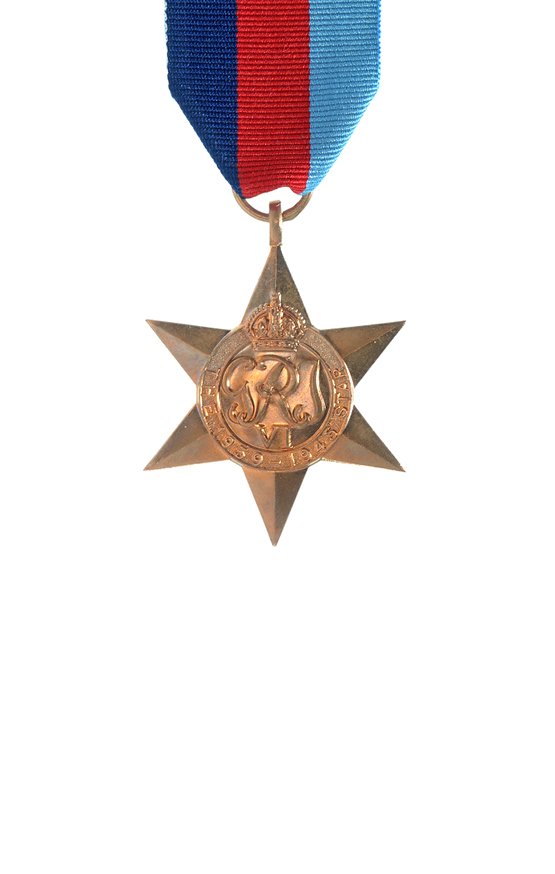
The 1939-45 Star is the first in a series of eight campaign stars instituted in 1945 to recognise service in World War Two. The ribbon has three equal vertical stripes of dark blue, red and light blue. The dark blue stripe symbolises the service of the Navy and the Merchant Navy, the red stripe symbolises the service of the Army, and the light blue stripe symbolises the service of the Air Force. The equal width bands represent the equal contributions of the three service arms towards victory. The ribbon was devised by King George VI. Two clasps could be awarded with this medal: ‘Battle of Britain’ and ‘Bomber Command’. Only aircrew would qualify for these clasps although a small number of Fleet Air Arm naval pilots flew for the air force and would be eligible for the ‘Battle of Britain’ clasp.
The Atlantic Star
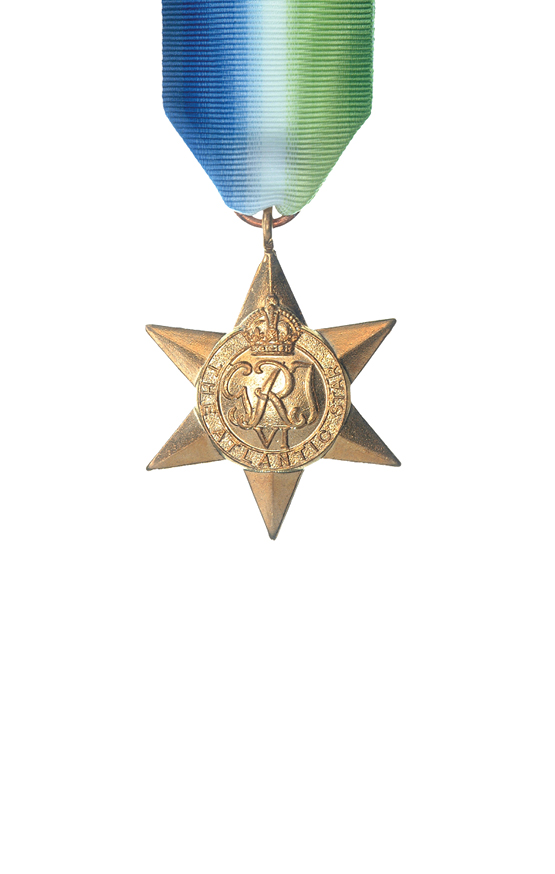
The Atlantic Star was awarded for service during the Second World War. It was instituted to commemorate the Battle of the Atlantic the longest continuous military campaign in the Second World War running from 3 September, 1939 – 8 May, 1945. Six months naval service or four months air service in the Atlantic, United Kingdom (‘home’) waters or North Russian waters was normally required. The ribbon is watered silk coloured blue, white and green, symbolising service in the oceans. Two clasps could be awarded with this medal: ‘France and Germany’ and ‘Air Crew Europe’. Personnel issued the Atlantic Star who then qualified for either the France and Germany and the Air Crew Europe Stars were awarded a clasp in respect of the second only (as only one clasp could be worn on the star).
The Africa Star
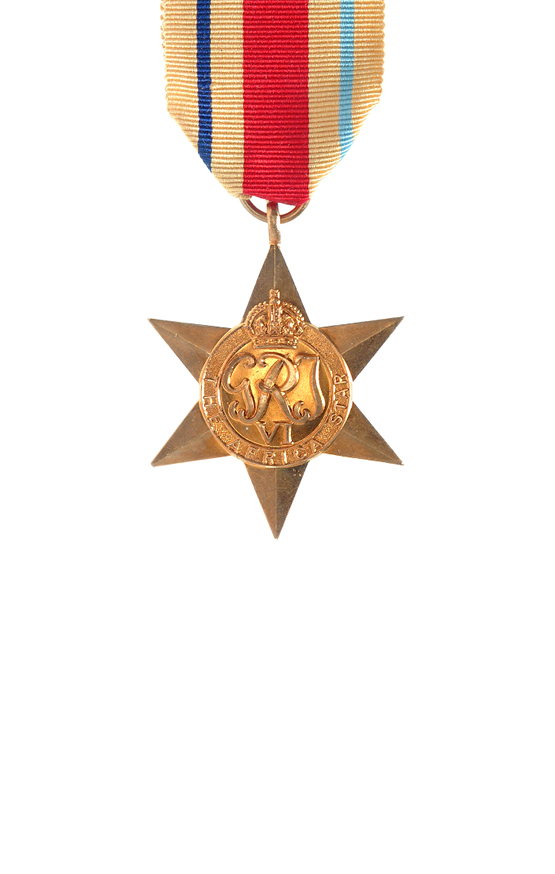
The Africa Star was awarded in the Second World War for service in North Africa between 10 June 1940 and 12 May 1943. The ribbon is pale buff in colour, with a central vertical red stripe, and narrower stripes, one dark blue and the other light blue. The pale buff background symbolises the desert, the central red stripe symbolises the Army, the dark blue stripe symbolises the Navy and Merchant Navy, and the light blue stripe symbolises the Air Force. Three clasps could be awarded with this medal: ‘North Africa 1942-43’, ‘8th Army’, and ‘1st Army’. Naval personnel could only qualify for the ‘North Africa 1942-43’ clasp – for in shore service.
The Pacific Star
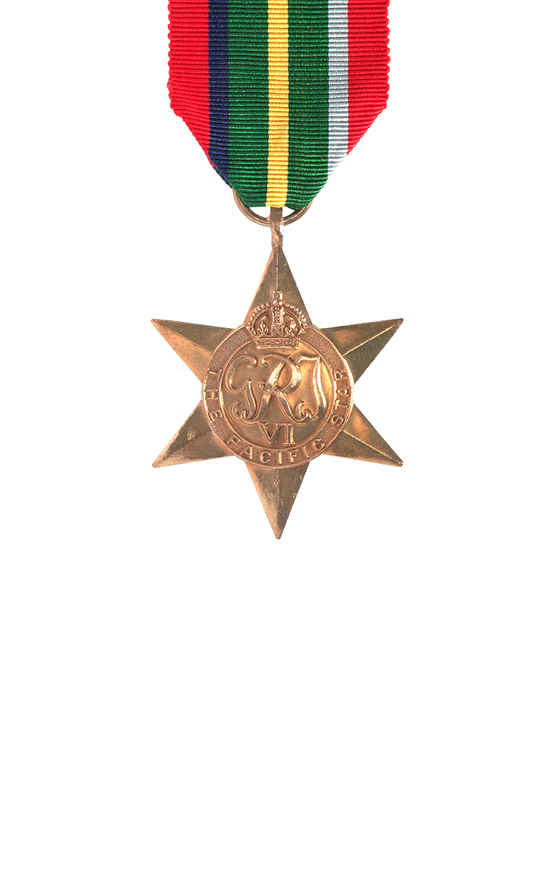
The Pacific Star was awarded in the Second World War for operational service in the Pacific between 8 December 1941 and 2 September 1945. This medal was also awarded for certain specified service in China, Hong Kong, Malaya and Sumatra: between 8 December 1941 and 25 December 1941 (for Hong Kong); between 8 December 1941 and 15 February 1942 (for China and Malaya); and between 8 December 1941 and 23 March 1942 (for Sumatra). The centre of the ribbon is dark green (symbolising the jungle) with a central yellow stripe (symbolising the beaches). On the outer edges are wide stripes of red (representing the Army), with narrow stripes of dark blue and light blue (representing the Navy and Air Force) between the stripes of dark green and red. A ‘Burma’ clasp could be awarded with this medal. Personnel qualifying for both the Pacific and Burma Stars were awarded the first star but only a clasp in respect of the second.
The Italy Star
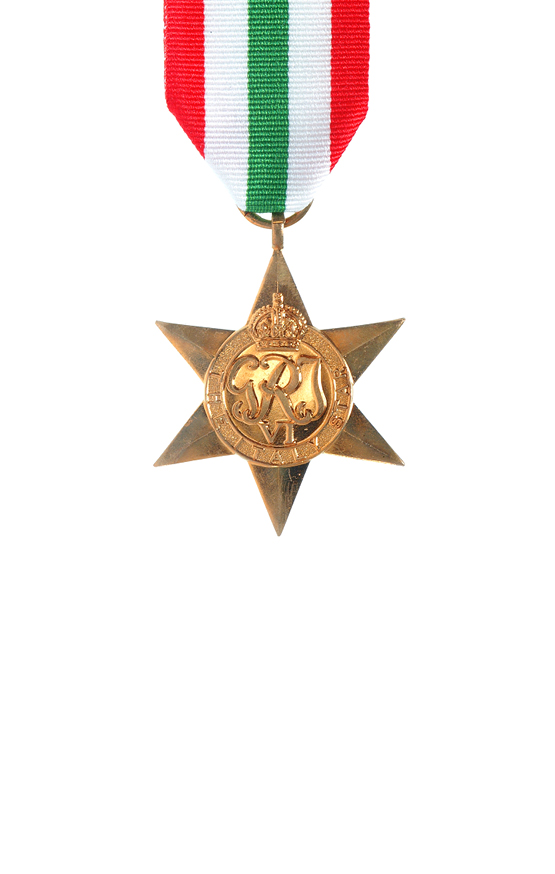
The Italy Star was awarded for operational service in Italy and adjacent countries in the Second World War between 11 June 1943 and 8 May 1945. No clasps were awarded. The ribbon uses the national colours of Italy; red, white and green as seen on the flag.
The War Medal 1939-1945
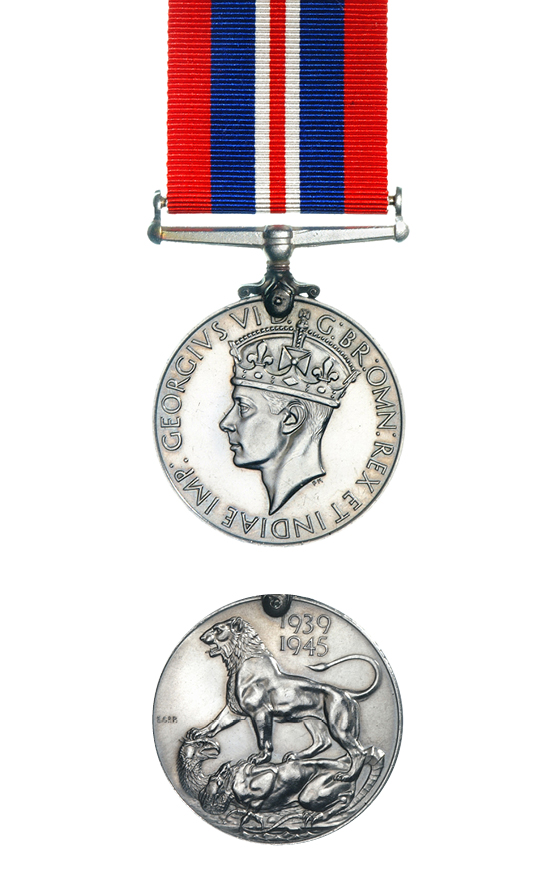
The War Medal 1939-45 was awarded across the British Commonwealth to all full-time members of the Armed Forces in the Second World War for 28 days service between 3 September 1939 and 2 September 1945, irrespective of where they were serving. The ribbon is the red, white, and blue of the (British) Union Flag. There is a narrow central red stripe with a narrow white stripe on either side. There are broad red stripes at either edge, the two intervening stripes being blue.
A bronze oak leaf on the medal ribbon denotes that the recipient was Mentioned in Despatches. To be Mentioned in Despatches a member of the armed forces had their name mentioned in an official report, written by a superior officer, and sent to a higher command. The report would describe the individual’s gallant or meritorious action in the face of the enemy.

